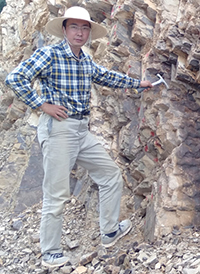 Dayou Zhai. Yunnan Key Laboratory for Palaeobiology, Institute of Palaeontology, Yunnan University, 650500 Kunming, Yunnan, China and MEC International Joint Laboratory for Palaeobiology and Palaeoenvironment, Yunnan University, 650500 Kunming, Yunnan, China. dyzhai@ynu.edu.cn
Dayou Zhai. Yunnan Key Laboratory for Palaeobiology, Institute of Palaeontology, Yunnan University, 650500 Kunming, Yunnan, China and MEC International Joint Laboratory for Palaeobiology and Palaeoenvironment, Yunnan University, 650500 Kunming, Yunnan, China. dyzhai@ynu.edu.cn
Dayou Zhai graduated from Peking University with a bachelor’s degree on Biological Sciences in 2005, and afterwards studied Quaternary Geology in Institute of Geology and Geophysics, Chinese Academy of Sciences (IGGCAS). In the work group of Prof. Jule Xiao, Dayou Zhai investigated both the species assemblage and the shell chemistry of ostracods from late Quaternary sediments in an attempt to reconstruct past hydrological changes. Due to the limited sample sizes, Dayou developed a special technique to extract ostracod valves from the lake core quantitatively, which also allowed detailed study of the population age structure of these tiny crustaceans. Dayou defended his Ph.D. thesis in 2011, and was erected as a vice Research Professor in IGGCAS in 2013 after working as a postdoctoral researcher. In 2015, Dayou moved to Yunnan Key Laboratory for Palaeobiology, Yunnan University and became a Research Professor in 2019. Dayou Zhai’s research interest covers the Cambrian bivalved arthropods and Quaternary and living ostracods, and is particularly engaged in the taxonomy, phylogeny, and ecology of these animals.
![]()
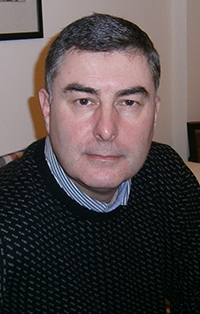 Mark Williams. Centre for Palaeobiology Research, School of Geography, Geology and the Environment, University of Leicester, Leicester LE1 7RH, UK and MEC International Joint Laboratory for Palaeobiology and Palaeoenvironment, Yunnan University, 650500 Kunming, Yunnan, China. mri@leicester.ac.uk
Mark Williams. Centre for Palaeobiology Research, School of Geography, Geology and the Environment, University of Leicester, Leicester LE1 7RH, UK and MEC International Joint Laboratory for Palaeobiology and Palaeoenvironment, Yunnan University, 650500 Kunming, Yunnan, China. mri@leicester.ac.uk
Mark Williams is a Professor of Palaeobiology at the University of Leicester, United Kingdom and a co-director of the MEC International Joint Laboratory for Palaeobiology and Palaeoenvironment at Yunnan University, China. He is interested in the evolution of the biosphere from the Cambrian to the Anthropocene.
![]()
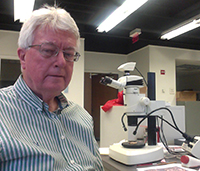 David J. Siveter. Centre for Palaeobiology Research, School of Geography, Geology and the Environment, University of Leicester, Leicester LE1 7RH, UK and MEC International Joint Laboratory for Palaeobiology and Palaeoenvironment, Yunnan University, 650500 Kunming, Yunnan, China. djs@leicester.ac.uk
David J. Siveter. Centre for Palaeobiology Research, School of Geography, Geology and the Environment, University of Leicester, Leicester LE1 7RH, UK and MEC International Joint Laboratory for Palaeobiology and Palaeoenvironment, Yunnan University, 650500 Kunming, Yunnan, China. djs@leicester.ac.uk
David Siveter is Emeritus Professor of Palaeontology at his Alma mater, the University of Leicester. His main research interests are in Palaeozoic arthropods, especially ostracod crustaceans, and in exceptionally preserved Palaeozoic faunas, especially the Silurian Herefordshire and Cambrian Chengjiang lagerstätten. He has undertaken field-based research projects particularly in China, Japan, Uzbekistan, Kyrgyzstan, North America and various parts of Europe. He is a former President of The Micropalaeontological Society and is a recipient of its Brady Medal. He is an Honorary Visiting Professor at St Petersburg Mining University, Russia and Yunnan University, China.
![]()
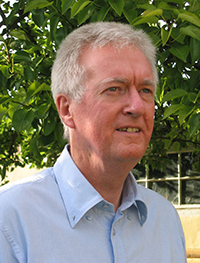 Derek J. Siveter. Earth Collections, Oxford University Museum of Natural History, Parks Road, Oxford, OX1 3PW, UK and Department of Earth Sciences, University of Oxford, South Parks Road, Oxford OX1 3PR, UK and MEC International Joint Laboratory for Palaeobiology and Palaeoenvironment, Yunnan University, 650500 Kunming, Yunnan, China. derek.siveter@oum.ox.ac.uk
Derek J. Siveter. Earth Collections, Oxford University Museum of Natural History, Parks Road, Oxford, OX1 3PW, UK and Department of Earth Sciences, University of Oxford, South Parks Road, Oxford OX1 3PR, UK and MEC International Joint Laboratory for Palaeobiology and Palaeoenvironment, Yunnan University, 650500 Kunming, Yunnan, China. derek.siveter@oum.ox.ac.uk
Derek Siveter is Emeritus Professor of Earth Sciences (Palaeobiology) in the University Museum of Natural History, Oxford. His research focuses on the systematics, palaeobiology and phylogeny of fossil arthropods, together with the faunas of the Herefordshire (Silurian; UK) and Chengjiang (Cambrian; China) Konservat-Lagerstätten. His earlier career was spent at the University of Leicester, Trinity College Dublin, and the University of Hull. He is a past Fellow of St Cross College, Oxford; Honorary Visiting Professor at the University of Yunnan (Kunming); Leverhulme Trust Emeritus Research Fellow; and Lapworth Medallist of the Palaeontological Association.
![]()
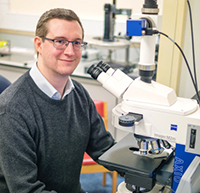 Thomas H.P. Harvey. Centre for Palaeobiology Research, School of Geography, Geology and the Environment, University of Leicester, Leicester LE1 7RH, UK and MEC International Joint Laboratory for Palaeobiology and Palaeoenvironment, Yunnan University, 650500 Kunming, Yunnan, China. thph2@leicester.ac.uk
Thomas H.P. Harvey. Centre for Palaeobiology Research, School of Geography, Geology and the Environment, University of Leicester, Leicester LE1 7RH, UK and MEC International Joint Laboratory for Palaeobiology and Palaeoenvironment, Yunnan University, 650500 Kunming, Yunnan, China. thph2@leicester.ac.uk
Tom Harvey is a Lecturer in Geosciences at the University of Leicester, UK. He received his BSc in Geology and Biology and MSc in Palaeobiology from the University of Bristol, and his PhD from the University of Cambridge. During his PhD he developed research into Cambrian arthropods and other animals through study of exceptionally preserved “small carbonaceous fossils” (SCFs), which he continued to work on through subsequent postdoctoral positions in Leicester and Cambridge. His research has led him to a broad interest in linking the fine-scale anatomy in exceptionally preserved fossils to large-scale patterns in animal phylogeny, evolution and ecology.
![]()
 Robert S. Sansom. School of Earth and Environmental Sciences, University of Manchester, Oxford Road, M13 9PT, UK. robert.sansom@manchester.ac.uk
Robert S. Sansom. School of Earth and Environmental Sciences, University of Manchester, Oxford Road, M13 9PT, UK. robert.sansom@manchester.ac.uk
Rob works across both biological and earth Sciences with degrees in each respectively from the University of Oxford and Bristol. He is now a senior lecturer at the University of Manchester where his research addresses various topics of animal evolution in deep time. This including animal origins and the evolution of early vertebrates, drawing upon paleontological analyses, phylogenetic methods, taphonomic studies, and the intersection of all three.
![]()
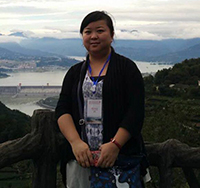 Huijuan Mai. Yunnan Key Laboratory for Palaeobiology, Institute of Palaeontology, Yunnan University, 650500 Kunming, Yunnan, China and MEC International Joint Laboratory for Palaeobiology and Palaeoenvironment, Yunnan University, 650500 Kunming, Yunnan, China. 20179015@ynu.edu.cn
Huijuan Mai. Yunnan Key Laboratory for Palaeobiology, Institute of Palaeontology, Yunnan University, 650500 Kunming, Yunnan, China and MEC International Joint Laboratory for Palaeobiology and Palaeoenvironment, Yunnan University, 650500 Kunming, Yunnan, China. 20179015@ynu.edu.cn
Huijuan Mai graduated from Peking University with a bachelor's degree and received a Ph.D. degree from the Institute of Vertebrate Palaeontology and Palaeoanthropology, Chinese Academy of Sciences. Her main research is on Archaeometry, which analyzes archaeological remains with various techniques. She carried out postdoctoral research in the Yunnan Key Laboratory for Palaeobiology of Yunnan University during 2017‒2019, mainly focusing on proteomics research in fossils. In addition, she is in charge of the operation of micro-CT (Zeiss Xradia 520 Versa). Huijuan explores the relationship between fossil preservation types and imaging effects based on micro-CT technology, and participates in the research of arthropods in the Chengjiang biota.
![]()
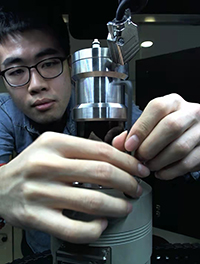 Runqing Zhou. Institute of Geology and Geophysics, Chinese Academy of Sciences, 100029 Beijing, China. r.zhou@mail.iggcas.ac.cn
Runqing Zhou. Institute of Geology and Geophysics, Chinese Academy of Sciences, 100029 Beijing, China. r.zhou@mail.iggcas.ac.cn
unqing Zhou is an X-Ray computer tomography engineer as well as a Ph.D. candidate studying the methane hydrate behaviour in IGGCAS. He has material-science and geoscience backgrounds and has rich experience in X-Ray CT operation and image application in various fields including material sciences, palaeontology, and petroleum geology.
![]()
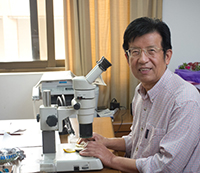 Xianguang Hou. Yunnan Key Laboratory for Palaeobiology, Institute of Palaeontology, Yunnan University, 650500 Kunming, Yunnan, China and MEC International Joint Laboratory for Palaeobiology and Palaeoenvironment, Yunnan University, 650500 Kunming, Yunnan, China. xghou@ynu.edu.cn
Xianguang Hou. Yunnan Key Laboratory for Palaeobiology, Institute of Palaeontology, Yunnan University, 650500 Kunming, Yunnan, China and MEC International Joint Laboratory for Palaeobiology and Palaeoenvironment, Yunnan University, 650500 Kunming, Yunnan, China. xghou@ynu.edu.cn
X.G. Hou was graduated from the Department of Earth Sciences of Nanjing University, studying stratigraphy and palaeontology at the Department, received his MSc from Nanjing Institute of Geology and Palaeontology, Chinese Academy of Sciences and PhD from the Department of Palaeontology, Uppsala University, Sweden.
While making investigation into Lower Cambrian bradoriids in Yunnan Province in 1984, he discovered the Chengjiang Lagerstätte on July 1st 1984 from the Lower Cambrian Qiongzhusi Formation at Maotian Hill of Chengjiang County, Yunnan Province. It gives him the first time to study the variability of the earliest Phanerozoic animals and their construction close to or at the very roots of metazoan phyla. Since then he has been working on it wholeheartedly. From 1990 he mainly did his research work in collaborations with Jan Bergström at the Department of Palaeozoology, Swedish Museum of Natural History in Stockholm, David J. Siveter, Richard J. Aldridge and Mark Williams at the Department of Geology, University of Leicester and Derek J. Siveter at the Department of Earth Sciences, University of Oxford. He transferred to Yunnan University from the Nanjing Institute of Geology and Palaeontology in 2000, was the former Director of Yunnan Key Laboratory for Palaeobiology, Yunnan University and retired from the University in 2019.

